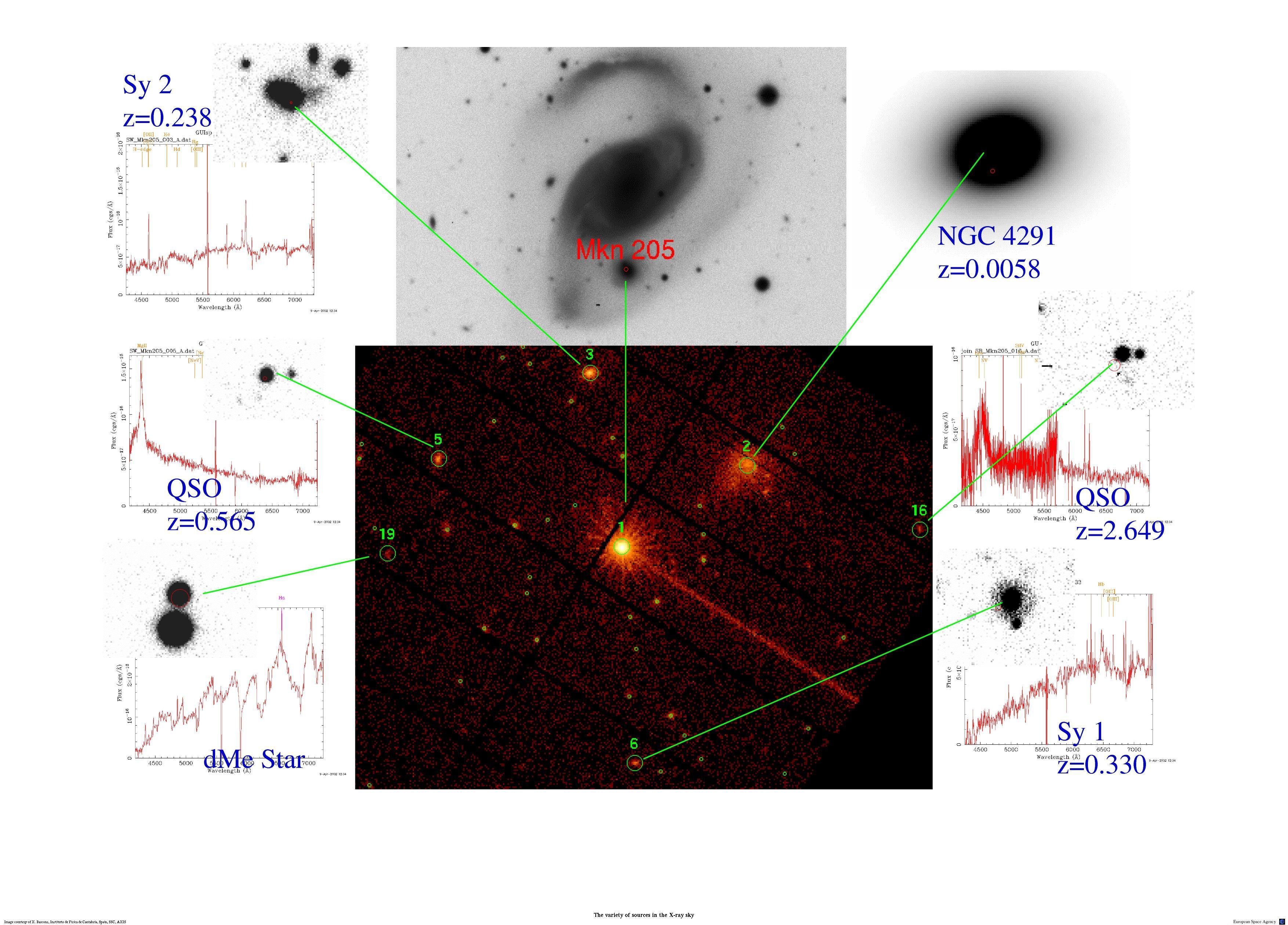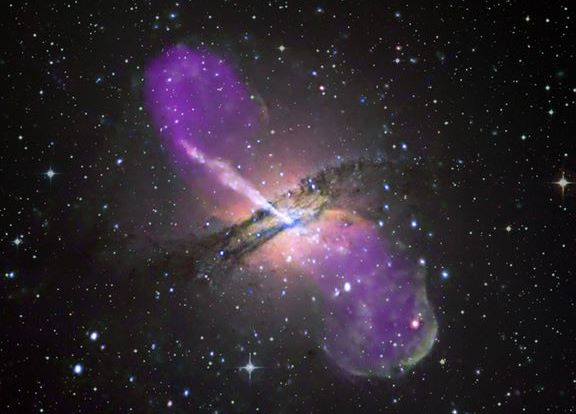Life on Earth is ultimately powered by the energy received from the surface of a star: the Sun. Despite its importance to us, the Sun is just one of many thousands of millions of stars contained within the Milky Way, which appears as a nebulous band across the sky. Such agglomerations of stars (and gas and dust), distributed over many thousands of light years, are called galaxies, and there are again many thousands of millions of galaxies in the Universe. Understanding how those vast, almost unimaginable, entities were assembled over the history of the Universe is one of the most active topics in current Astrophysics.
In the centres of about ten per cent of nearby galaxies a new phenomenon appears: they emit as much radiation as the rest of the galaxy together (or more). These are called Active Galactic Nuclei (AGN) and the current framework to understand how something of the size of the Solar System can emit as much light as a whole galaxy implies the existence of a black hole with a mass equivalent to millions to hundreds of millions of Suns (SuperMassive Black Hole). Matter falls into them (in a process denominated accretion) liberating energy, which is converted into radiation. AGN could be considered just extreme freaks in the galaxy society, if it weren't for the fact that all nearby galaxies (active or otherwise) are known to host a supermassive black hole (including the Milky Way), with mass proportional to that of the full galaxy. Whatever processes occur while galaxies are growing, they also generate a massive nucleus, which is revealed as an AGN when it grows, and lies dormant the rest of the time. The realisation of the inextricable link between AGN and their host galaxies has propelled AGN studies to the forefront of astronomical research.
This inquiry is complicated (and spurred) by the bewildering variety of properties among AGN: variability in intervals of between seconds and decades (which in turn reveal the typical sizes of the regions in which the corresponding emission originates), emission at many wavelengths (between radio wavelengths and gamma rays), brightness (sometimes up to ten million million times that of the Sun) and distances (from the neighbours of the Milky Way to some of the most distant known objects in the Universe). Detecting AGN and recognising them as such is indeed a difficult task, in which the X-ray band excels. This is so because X-ray emitting regions must be very energetic, as is the immediate vicinity of an accreting supermassive black hole. Copious X-ray emission is the "smoking gun" evidence for the presence of such a feeding monster. In addition, absorption by material surrounding the nucleus, that plagues similar studies in the optical and ultraviolet, is much mitigated due to the penetrating nature of X-ray radiation (utilised for radiographies in Medicine). Despite these important advantages of X-ray radiation, a full picture of the nature of AGN can only be revealed in its many facets by combining information from across the electromagnetic spectrum, as we will do effectively and reliably in the ARCHES project.
The association of X-ray-detected astronomical sources with those found in other wavelengths, providing information about its reliability and the brightness in all bands is one of the main goals of ARCHES, with an important legacy value for many different astronomical investigations. Within ARCHES we will explore several venues of exploitation of this tremendous asset, in the fields of stars, clusters of galaxies and AGN.
One example of the latter would be to ascertain the frequency of the presence of absorption in AGN and its dependence on other source properties (brightness, geometry…), since many such fundamental ingredients in our understanding of these objects and their internal structure are currently missing. Furthermore, several lines of evidence suggest that most of the energy emitted by accretion along cosmic history has happened in absorbed AGN. The multi-wavelength nature and the sheer size of the samples provided by ARCHES would allow testing this intriguing prospect.
In addition, about ten per cent of AGN are conspicuous because of their emission in the radio band. This emission is thought to come originally from the dissipation of the energy of very energetic particles in jets accelerated originally very close to the central black hole. There is the exciting possibility that all AGN are actually radio emitters, but that only a fraction manages to develop the power needed to be detected as such. Again, ARCHES bears significant promises in this respect.
Determining the distance to an astronomical object, through its redshift, is very expensive in terms of telescope time: only a few percent of the ARCHES sources are expected to have that information available. Techniques for using of the relative brightnesses in different bands to estimate distances (photometric redshifts) have developed significantly in recent years, and we will explore the potential of the ARCHES data in this respect. This could increase the AGN samples tenfold or more.

